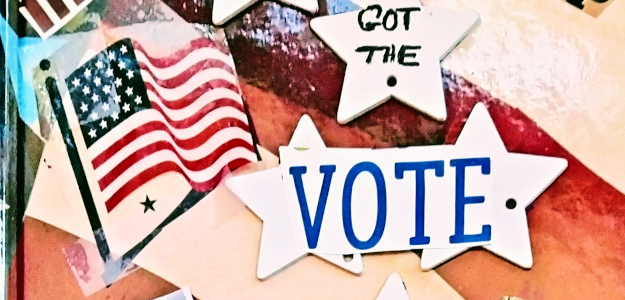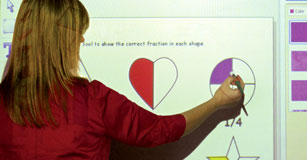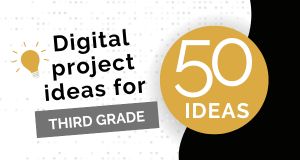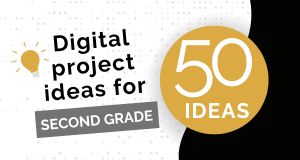50 Activities for Kindergarten
Hands-on ideas to engage Kindergarten students in meeting standards and learning goals through digital projects.
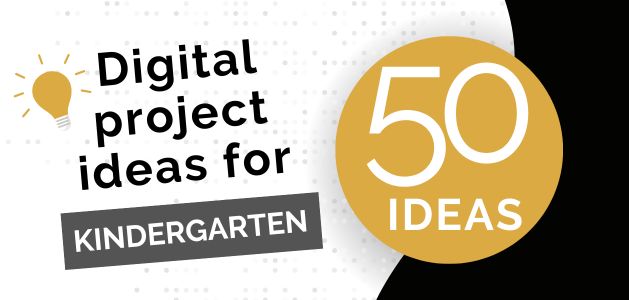
Fifty ideas for using a digital approach to help kindergarten students meet standards and learning goals.
1. Go on a shape hunt
Read a book like The Shape of Me and Other Stuff by Dr. Seuss. Then have students walk around school or their home and find shapes, like rectangles, triangles, or even cylinders and spheres.
Than, have students use their devices to capture the shapes they find and label or add narration to identify them.
Seeing Shapes lesson plan with literature connections, samples, and more
2. Create a digital greeting
Have your students create or add original artwork to a digital creativity tool and then record their voices to create a multimedia message. Copy the URL or export the file and send via email or text.
3. Scratch for self-expression
Remember scratch art? Wixie has a collection of digital scratch art pages with a variety of backgrounds students can "scratch" using an eraser tool.
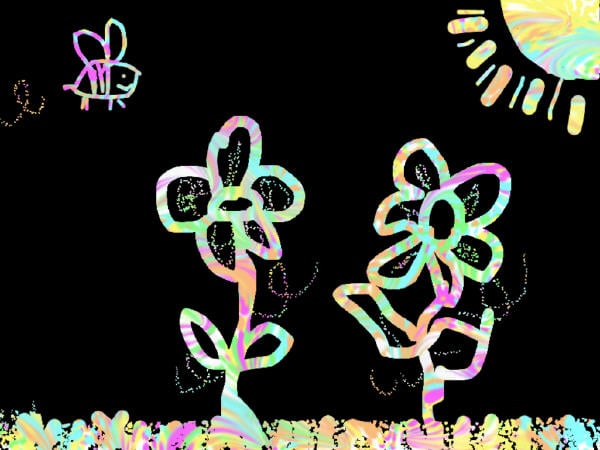
4. Make a Mondrian
Dutch painter Piet Mondrian is best known for his work that used primary colors and shapes. Visit the Tate Museum's page about Mondrian with your child to learn about this artist and his work.
Have students use a paint bucket tool to fill a Mondrian Coloring page with color.
5. Celebrate a community helper
Community helpers are essential to the health and success of our world. Have students celebrate how a community helper is essential to a community by combining words, pictures, and even narration in a digital sentence strip.
6. Color to design a school backpack
Ask students to color a school backpack with a design that shows off their unique personalities.
Encourage students to use their device's microphone or video camera to record an explanation of their design.
7. Write names with letter sound pictures
As students learn their letter sounds, ask them to find images of objects that have the same initial sounds as the letters in their name.
Help students spell their name across the top of a blank page and add clip art images to match the initial sound of each letter in their name.
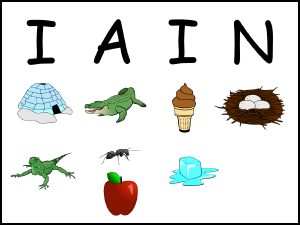
8. Design a hibernation hotel
As students begin considering what living and nonliving objects need, have them design a hotel for a hibernating animal that contains everything it needs to stay safe, warm, and fed over the winter.
Explore a Hibernation Hotel lesson plan
9. Explore antonyms
Explore antonyms with your students. Read Dr. Seuss's The Foot Book and create a list of antonyms. You can start them off with things like hot/cold or high/low.
Students can use a creativity and productivity tool, like Wixie, to create illustrations of an antonym pair. Students can use the microphone tool to record their explanations.
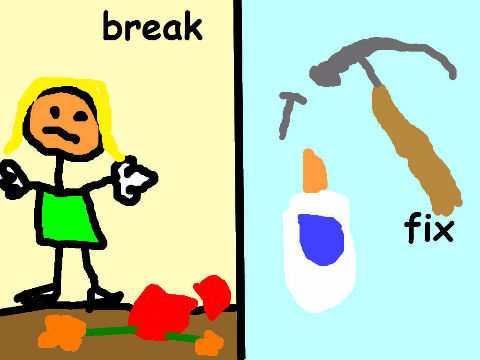
10. Sort and label a nature walk
Walk around outside and collect rocks, flowers, sticks etc. Find a place to sort them into categories any way you like - shape, color, texture, type.
Add the picture to a digital tool, like Wixie, and add text or voice narration to label objects and explain sorting.
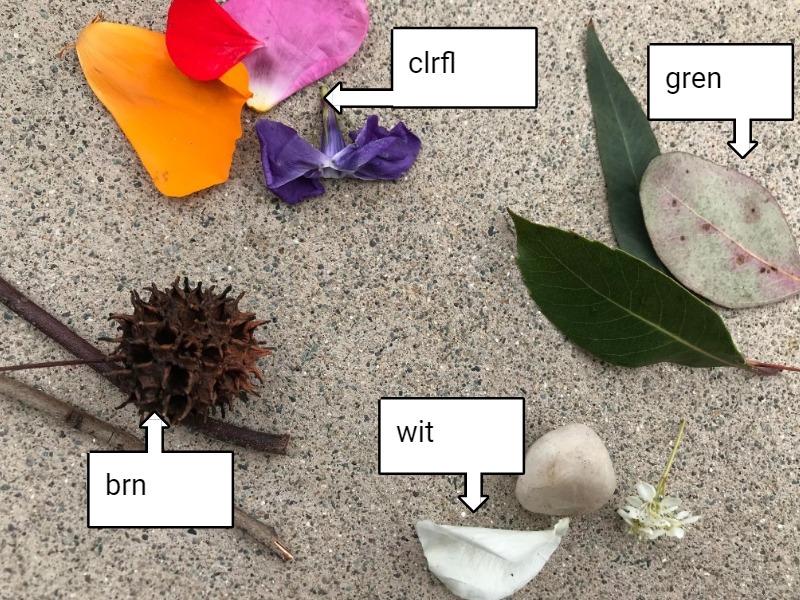
11. Create a collage
Have students use a digital tool to represent themselves with a collage of images. Digital tools like Wixie make it easy to add images and move them around.
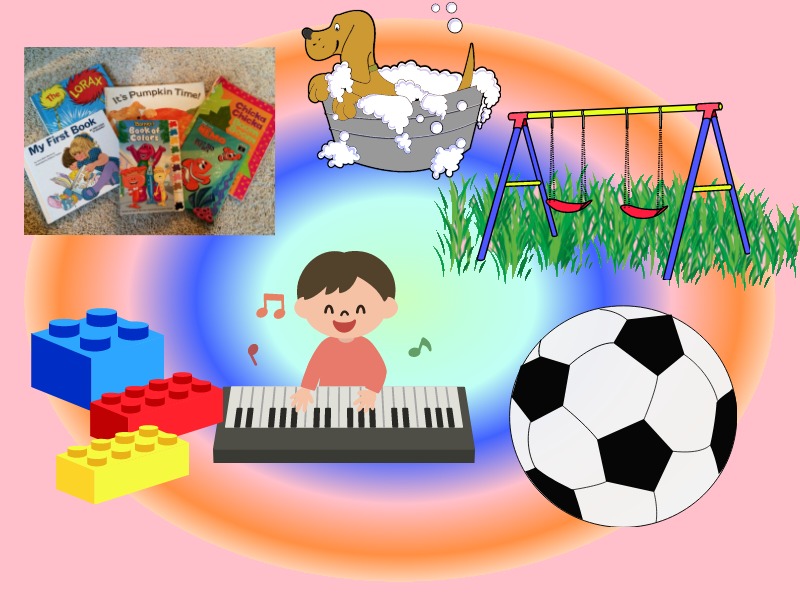
Students can use this same process to represent events in a story or things they see during a particular season.
Explore a Me: A Visual Essay lesson plan
12. Survey peers
Survey your friends, family members, and neighbors about a favorite book, sport, food, game, or at-home activity. Project a question or use a tally sheet on your white board to collect student responses.
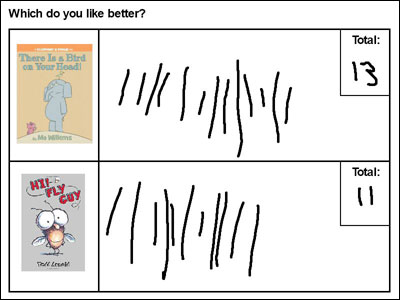
13. Write a sight word story
Have your emerging readers practice sight words by writing an "I go... I see" sight word story.
Have each student finish the sentences and illustrate the page. Print and combine into a class book students can read in your library.
14. Describe your family
Have students use a paint program to paint a picture of their family and use their device's microphone to name each person and describe them. Have students add text labels with each family member's name or a trait they used for this person in their description.
15. Make a map of your neighborhood
Have students create a map of important places in their neighborhood. Have students start with a plain page or use digital grid paper. Then, ask students to draw locations or capture photos with their devices.
16. Become the masked reader
Take a clue from the Masked Singer television show to make reading fluency practice less stressful and way more fun.
This is especially helpful for ELLs and struggling readers since they can practice, record, delete, and try again to produce their best work. Their work can also remain completely private if the reader is not unmasked.
17. Showcase the seasons
The changing seasons are a scientific phenomenon that students can easily see. Ask students to draw or collect clip art images of objects they see during a specific time of year.
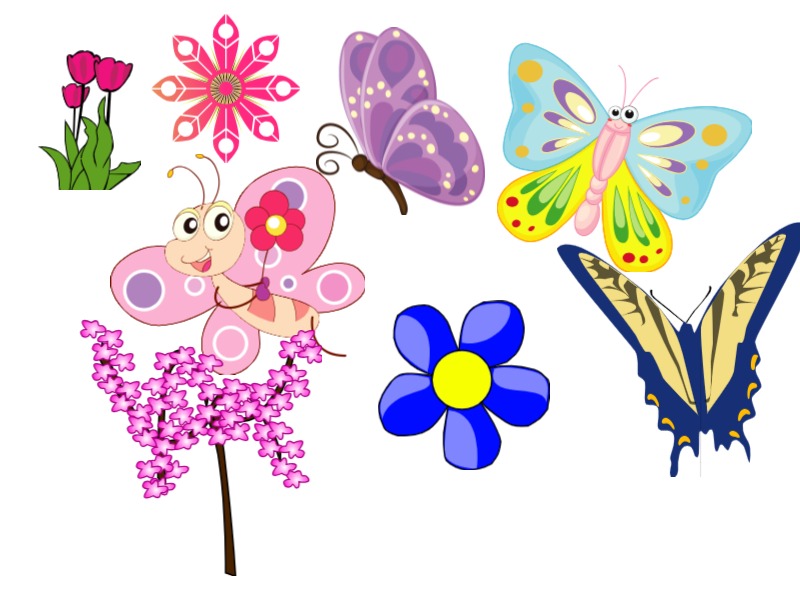
18. Make a coin caterpillar
Coins are a great manipulative to represent value and provide a real world context for counting and addition practice. But since physical coins are a great way to spread germs, take advantage of digital versions.
To make work with coins fun, ask students to create coin caterpillars. Then, ask them to count the number of each coin and calculate the total "value" of the caterpillar.
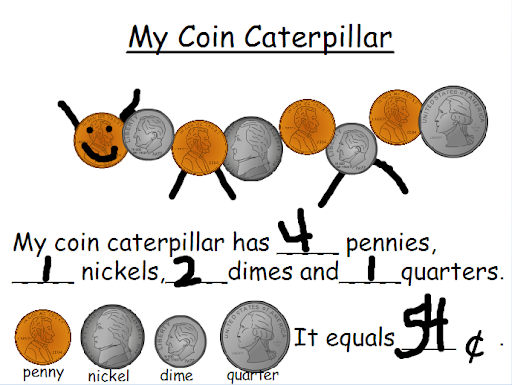
19. Share a virtual high five
It's never too early to teach gratitude. Ask students to show their appreciation for others with a virtual high-five.
Trace their hand on paper and take a photo or find a digital hand image and add images and voice narration to tell someone their actions are amazing.
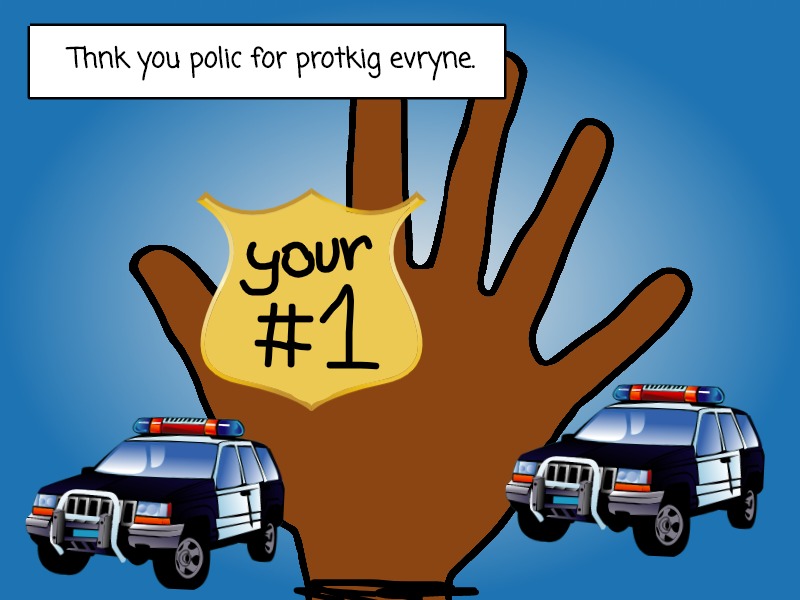
20. The 13 Days of Halloween
Practice counting skills with a 13 days of Halloween project that contains pages for the numbers 1-13, indicating how much of each object "my goblin gave to me." Combine pages together to create a class book (or two).
Explore a 13 Days of Halloween lesson plan
21. Fashion a family flag
The symbols for a country represent its history and values. Ask students to apply what they have learned about symbols to fashion a flag to represent their family.
Explore a Fashion a Family Flag lesson plan
22. Go on a letter hunt
Walk around your classroom or school and hunt for objects that begin with a specific letter, such as a clock for the letter c.
Students can use a device to capture images and label what they find or use a creativity tool, like Wixie, to add or draw pictures that begin with each letter sound.
23. Explore emotions with the color monster
Expressing and understanding emotions is hard for a kindergartner. Read The Color Monster by Anna Llenas to your learners and discuss the different emotions of the monster.
Have students choose one emotion, like happy, calm, or angry, and use a digital tool to illustrate what causes that emotion for them. Then, have them record an appropriate action they can take when they feel this way.
24. Share your favorite book
To build foundations for argument writing, primary learners start by stating opinions. Ask your kindergarten students to use paint tools to draw a picture of their favorite book and use their device's microphone to record why.
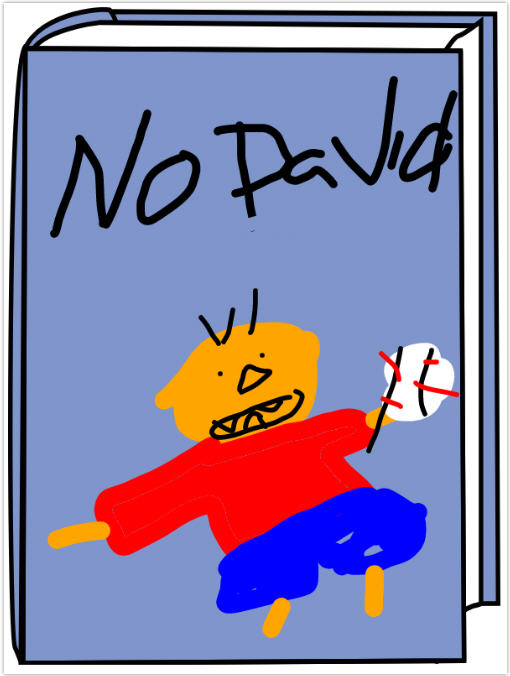
25. Play with patterns
Learning how to identify and create patterns helps build foundations for future math, even algebra! Digital art tools make it easy to paint patterns or add images to make ABA, ABBA and other repeating patterns.
26. Describe a book character
Have students use a character trait map to identify a character's physical traits, feelings, and actions.
Explore how to use the Mind Map tools in Wixie
27. Inform others
Even the youngest learners can inform others about the topics they are learning. Instead of struggling with writing or typing, have students use a digital tool to add an image and record their voice to share information. Perfect for ELLs.
28. Balloons Over Broadway
Read Balloons Over Broadway by Melissa Sweet to let students know about Tony Sarg and the balloons he created for the Macy's Thanksgiving Day Parade.
Then, ask them to use a paint program to design their own Thanksgiving Day parade balloon. Have students use their device's microphone to share a story about seeing it in the parade.
29. Showcase a habitat
Celebrate your budding scientists by having them apply their knowledge to showcase the plants and animals in their favorite habitat.
With tools like Wixie, it is easy for students to find a background and add clip art stickers to show what they know.
30. Share a symbol story
Read Norman Pearl's The Great Seal of the United States to have students hear from Ben Franklin about the process used to create the Great Seal. Then, ask them to create a story about another US symbol.
Explore a Symbol Story lesson plan
31. Count to design
While most kindergarten students will do rote counting to please their teacher, there are many ways to make counting fun. Add in an element of creativity and design thinking by asking them to count to design. For example, add food to a garden, animals to a safari park, or creatures to a spooky scene.
32. Record your positive actions
What actions do your students take to improve their community? Have students draw a picture, write a sentence and record their efforts!
33. Write a 5 senses poem
In addition to reinforcing scientific observation, engaging the five senses is a great way to help young learners add descriptions to their writing and practice vocabulary.
If your learners would benefit from a little direction, provide a specific topic for their poem.
Explore a 5 Senses Poetry lesson plan
34. Tell a tangram tale
After students have tried to solve tangram puzzles, read Ann Tompert's Grandfather Tang's Story where the main character rearranges tangram shapes to represent the characters and events as he tells a story.
Ask students to use tangram shapes to create an object using the tangram shapes and tell a story about it. Combine into a class book!
35. What if you could be going places?
Call or video chat with someone who lives far away or read about a new place to learn about the weather and culture in that location. Use a digital tool, like Wixie, to show the weather, what they would pack to wear, and what they would do in that location.
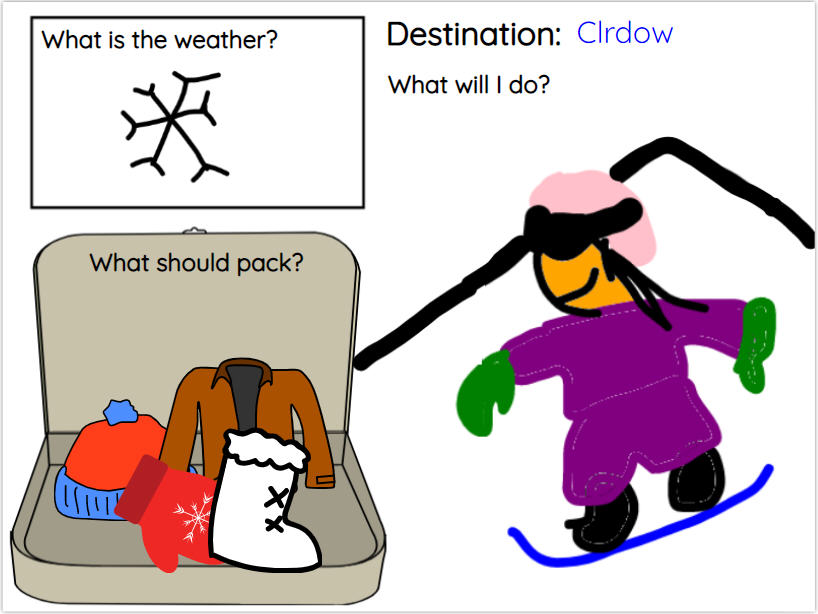
36. Use shapes to create a Mother's Day bouquet
Combine common clip art shapes to create a vase filled with flowers for Mother's Day.
37. Adapt a pattern story
To support your budding authors, ask them to give a twist to a story they know by adding or replacing nouns and verbs.
Explore a list of books perfect for student adaptation
38. Record a favorite memory
Have students reflect and create a favorite memory from the school year.
39. Create your own pet show
Read Pet Show! by Ezra Jack Keats. Have students use paint tools to draw a picture of their pet and add a superlative describing the award their pet won.
40. Plan a class party
Planning the details for a party, including needed space (measurement) and a budget (calculations), requires students to practice and apply math and argument skills to a real-life scenario.
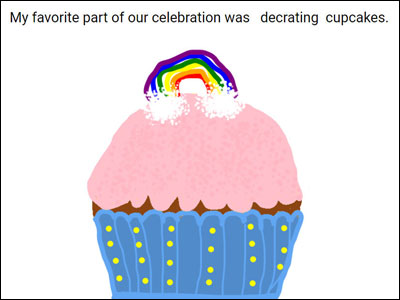
Explore a Plan an Event lesson plan
41. Create a digital word wall
Digital tools make adding thoughts to a personal word wall easy. Ask each student to add words they do not know from the books they are reading. Have students look up the meaning in a dictionary or ask a parent or teacher to help them define and add a picture and even voice recording.
42. Build foundations for scientific thinking
Encourage your student's budding inquiry by using a modified approach to the scientific method.
Have students begin with observation and hypotheses and then progress to thinking about how they can test their ideas and then analyze the results.
43. Publish student writing
Motivate emerging writers by publishing their stories. Use a tool like Wixie to have students write or record a story and create their own illustrations.
Share a URL or export their work to PDF to easily share to family phones and tablets.
44. Tell a cycle story
After learning about the life cycle of a frog or butterfly, have students retell it as a cycle story.
Explore a Cycle Story lesson plan
45. Create a classroom tour
It can be a little scary to come to a new class with new rules. Once your students have learned and settled into your classroom routine, ask them to apply their knowledge of locations and rules to design a classroom tour.
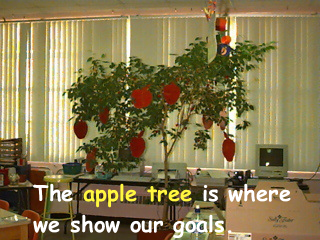
Using a digital tool makes it easy to share the finished tour with new students, as well as students joining the class the following year.
Explore a Classroom Tour lesson plan
46. Write about your favorite relative
Practice opinion writing through a favorite relative project. Give structure to your emerging writers by using an O-R-E-O Opinion template which asks them to state their opinion, share 2-3 reasons why, and finish with a concluding statement.
Share students' work with their favorite relative.
Explore a Favorite Relative lesson plan
47. Watch the weather
Spend time each day during morning meeting identifying the weather. Choose a specific day to ask students to record their observations using pictures and new terminology to create strong foundations for the scientific method.
48. Get creative with five and ten frames
Digital tools make it easy to get creative with five and ten frame counting projects. In October, count pumpkins in a ten frame farm garden. In summer, count beach balls and suns to design a beach towel pattern.
49. Construct with virtual blocks
Play with math is an opportunity to use math vocabulary and concepts while having fun. Find a game, like Wixie's Build with Blocks, for activities that let students build and create with shapes and digital manipulatives. If you have physical blocks at school or home, ask students to try to recreate their design with real blocks.
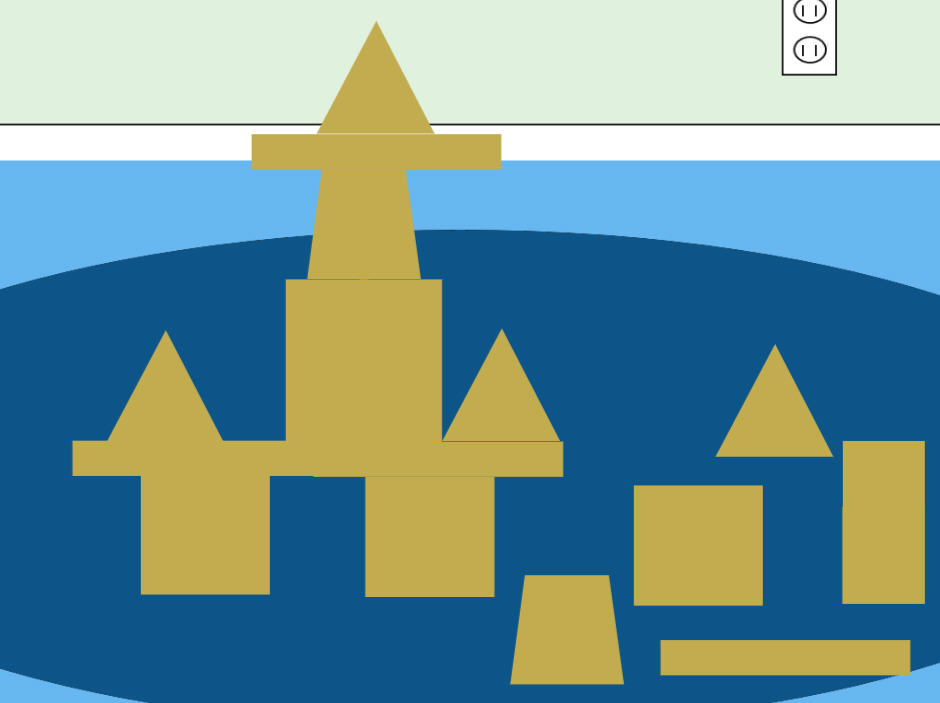
50. Write word problems
Have students use a paint or image program, like Wixie, to draw models that help the viewer (and themselves) visualize quantities and relationships in word problems.









